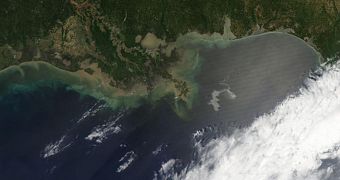The Gulf of Mexico is already polluted with millions of gallons of crude oil, according to the latest statistics. Despite exemplary mobilization on the part of the federal government, local authorities, and the oil company BP, clean-up efforts have been largely unsuccessful, and experts are currently analyzing methods of reducing the scale of the disaster, rather than ensuring it never takes place. Developing suitable clean-up methods is almost as important as the procedure itself, a Berkeley Lab scientist warns. Both planning and execution need to be carried out flawlessly, he adds.
“The concentration of detergents and other chemicals used to clean up sites contaminated by oil spills can cause environmental nightmares of their own. It is important to remember that oil is a biological product and can be degraded by microbes, both on and beneath the surface of the water. Some of the detergents that are typically used to clean-up spill sites are more toxic than the oil itself, in which case it would be better to leave the site alone and allow microbes to do what they do best,” explains Berkeley Lab expert Terry Hazen.
The scientist is based at the US Department of Energy's (DOE) Lawrence Berkeley National Laboratory, where he holds an appointment as a microbial ecologist at the Earth Sciences Division. Hazen is also widely considered to be a leading bioremediation expert, having accumulated a lot of experience after spending many years studying the devastating 1989 Exxon Valdez oil spill. “The untreated coastal areas were fully recovered within five years of the Amoco Cadiz spill. As for the treated areas, ecological studies show that 30 years later, those areas still have not recovered,” he says of the perils associated with using harsh detergents for the clean-up efforts.
“From a clean-up standpoint, right now we should be using sorbents to take up as much of the oil as possible. Then we need to gauge how quickly and completely this oil can be degraded without human intervention,” the expert says of the challenges authorities currently face. He adds that, in the case of the Exxon Valdez oil spill, the combination of detergents and bioremediation that was used turned out to be ineffective in the long run, in spite of promising results during the first year of use.
“What happened was that we took an oligotrophic (low nutrient) environment, and added lots of nutrients to it to speed up the degradation of the oil, which we probably did. However, we upset the ecological balance of the system, which could not handle the influx of nutrients. As a result, the severe environmental damage resulting from the spill is expected to persist for decades to come,” Hazen concludes.

 14 DAY TRIAL //
14 DAY TRIAL //